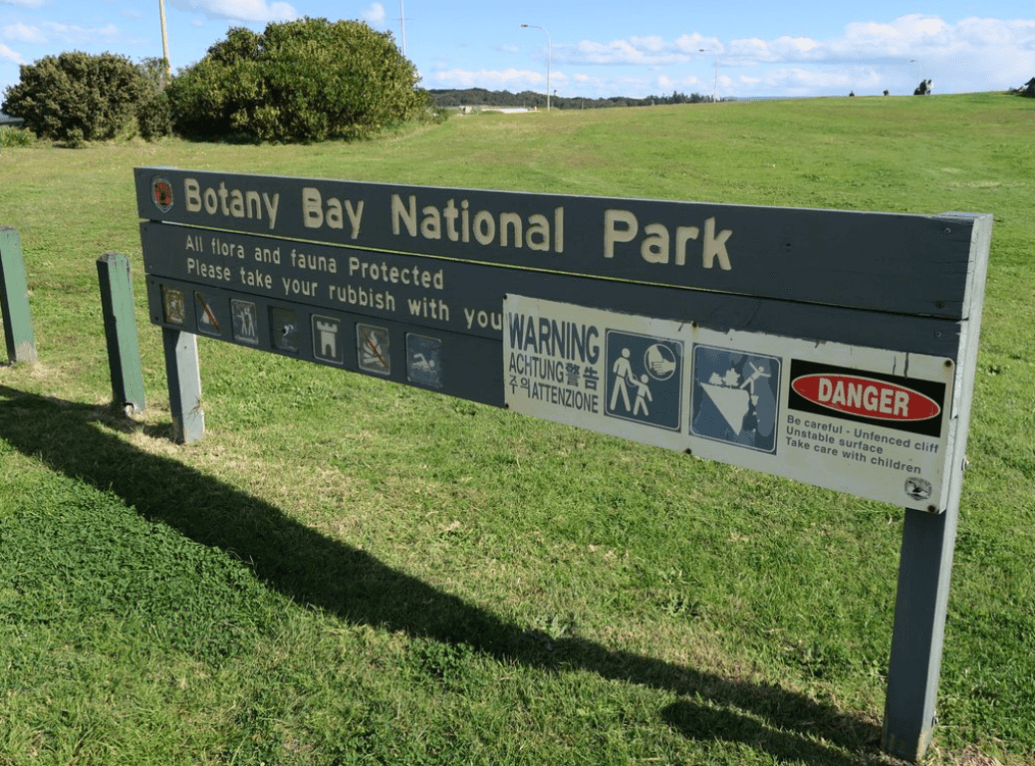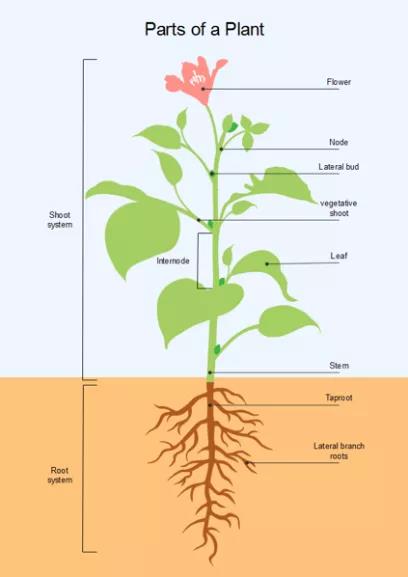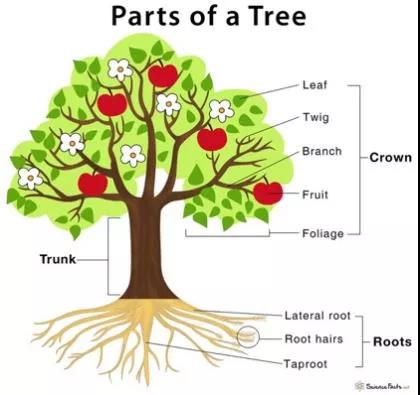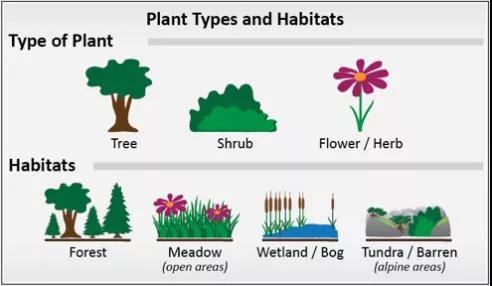接触过托福的同学应该都知道,在托福阅读或听力讲座中,涉及的学科范围很广,主要分为生命科学、人文科学、自然科学、社会科学四个大类,这四个大类下面分别还有一些小的类别。这让不少同学对这种专业性较强的文章一直是“闻风丧胆”,以至于发出这样的感慨“这些专业性较强的文章,中文我都不一定会,还要用英文去理解,真是难为我胖虎了”。
而托福的文章内容就真的这么晦涩难懂吗?其实还真不是,要知道,托福作为一个英语语言测试,是不会涉及到太深奥的学科知识的,可以说只要你具备基本的信息获取和理解能力,对于文本信息内容的理解就不在话下。但为什么大家还是会觉得难呢?其中一个原因就在于,这些讲座中的部分学术词汇日常比较少见,对它们的意思和读音都不够熟悉,这些单词要是都没有见过听过,就更不用说是是全文的深度理解了。
为了帮助各位考生突破学术背景词汇带来的理解困难,下面给大家总结了生命科学类中植物学的学科词汇及读音、含义,赶紧动脑记下来吧。
植物学学科词汇
Flora/ˈflɔ:rə/n植物,植物界
示例TPO29 Listening Lecture 1
There's a link between biodiversity and pedodiversity,an obvious relationship between soils and flora and fauna
Botany/ˈbɑ:təni/n植物学
Botanical/bəˈtænɪkl/n植物学的
“植物学”这个词,来源于法语的botanique,这里插播一个小故事,在澳大利亚有个海湾,就是以botany这个词命名的。
这个海湾以丰富多样的植物种类让17世纪初登澳大利亚的欧洲殖民者大为惊叹而得名Botany Bay。
Plant/plænt/n植物
alpine/ˈælpaɪn/plant高山植物
marsh/mɑ:rʃ/plant沼泽植物
host/hoʊst/plant宿主植物
示例TPO48 Listening lecture 3
And it always makes its way back to the host plant to feed,guided by the ants,the ant escort service,so to speak.
针对某一株植物的不同部分进行细分,大家则可以看下面的图片:
Shoot system茎叶系统
Flower/ˈflaʊə(r)/花
Lateral bud侧芽
Vegetative shoot营养枝
示例TPO1 Listening Lecture 4
vegetative parts of a plant's herbs and the flowers the marmots like to eat.
Node/noʊd/茎节(叶子或者树枝从主茎杆长出的地方)
Internode/ɪnˈtɜ:noʊd/节间(两个茎节之间的部分)
Leaf/li:f/叶子
Stem/stem/茎
示例TPO19Listening Lecture 3
carrying it down the leaves through the stems and into the roots.
Root system根系
Taproot/ˈtæpru:t/主根
Lateral branch roots侧向支根
Crown/kraʊn/树冠
Twig/twɪg/细枝,嫩枝
示例TPO20Listening Lecture 4
The hare actually has abundant food in the small twigs it finds.)
Branch/bræntʃ/树枝
示例TPO32 Listening Conversation 2
scientists found evidence that ancient people had been harvesting the branches from pistachio and almond trees
Fruit/fru:t/果实
Foliage/ˈfoʊliɪdʒ/枝叶(总称)
Trunk/trʌŋk/树干
Roof hairs根须
那了解完单一植物的各部分,我们再来看看不同的植物类型和植物的栖息地:
Shrub/ʃrʌb/n灌木
示例TPO 8 Listening Lecture 1
They clearly prefer hard wood forests with dense shrubs,bushes underneath the trees.
Herb/hɜ:rb;hɜ:rb/n草本植物
示例TPO18 Listening Lecture 3
Technically speaking,a spice is part of an aromatic plant that is not a leaf or herb.
Fern n蕨类植物
Algae/ˈælgi:/藻,海藻
Forest/ˈfɔ:rɪst;ˈfɑ:rɪst/n森林;林区
Meadow/ˈmedoʊ/n草地,牧场
Prairie/ˈpreri/n大草原,牧场
示例TPO4 Reading Passage 1
The other species,the Columbian white-tailed deer,in earlier times was common in the open prairie country.
Wetland/ˈwetlənd/n湿地,沼泽地
Bog/bɔ:g/n沼泽,泥塘
Tundra/ˈtʌndrə/n冻原,苔原(树木不生,底土常年冰冻的北极地区
示例TPO36 Reading Passage 1
Thus prairies and tundra regions,which have characteristic vegetations,also have characteristic soils.
除此之外,还有很多和植物学息息相关的词汇,继续往下看哦~
植物学相关学科词汇
Photosynthesis/ˌfoʊtoʊˈsɪnθəsɪs/n光合作用
示例TPO9 reading Passage 3
The algae capture the sun's energy by photosynthesis and store it in organic molecules.
Symbiosis/ˌsɪmbaɪˈoʊsɪs/共生(关系)
Log/lɔ:g;lɑ:g/n原木
Timber/ˈtɪmbə(r)/n木材,木料
示例TPO25 Reading Passage 2
The step from buying foreign timber to buying foreign ships was regarded as a short one.
Nectar/ˈnektə(r)/n花蜜
Pollen/ˈpɑ:lən/n花粉
示例TPO32 Reading Passage 3
they gather nectar and pollen from a wide variety of flowers.
Pollinate/ˈpɑ:ləneɪt/v授粉;传粉
Pollination/ˌpɑ:ləˈneɪʃn/n授粉;传粉
Cross-breed v使杂交;杂交繁育
Sprout/spraʊt/v发芽;抽芽;抽条;生长
Shoot/ʃu:t/n幼苗;嫩芽;新枝
Shell/ʃel/v给…去壳
Cluster/ˈklʌstə(r)/n(同类物丛生或聚集的)簇,团,束,串
示例TPO45 Reading Passage 2
dense cylindrical clusters of small,petalless flowers.
以上就是小编给大家分享的关于托福词汇学习之植物学学科类词汇的相关内容,更多其它问题可以直接点击页面的咨询框,会有专业的老师为你免费解答。更多
托福学习资讯请持续关注http://beijing.gedu.org
 ytt
2021-06-10
ytt
2021-06-10
 阅读:
阅读:





 Recommend
Recommend 阅读:2015
阅读:2015 阅读:535
阅读:535 阅读:558
阅读:558 阅读:418
阅读:418 阅读:1117
阅读:1117